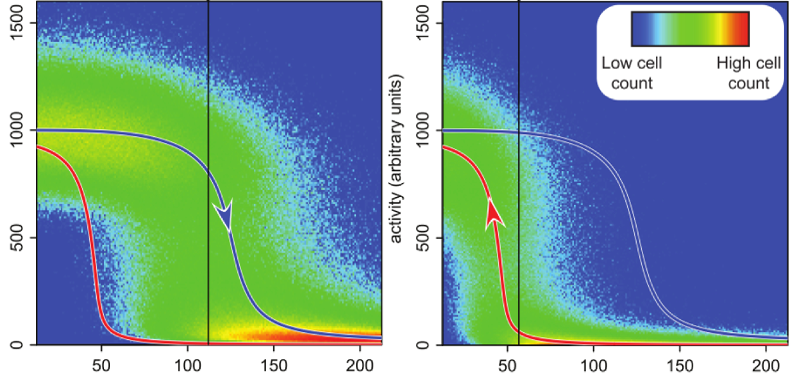Making a bistable switch

This honours project involves the design, construction and testing of an activator based bistable switch.
Bistable switches are an important type of genetic circuit. Several different circuit designs can give rise to bistability, that is, the ability to exist in alternative states of gene expression.
Perhaps the simplest design is a single positive feedback loop, where a protein can activate its own transcription. In the absence of the protein, the circuit would be OFF, while the presence of the protein would drive its own expression, resulting in an ON state.
In this project, you will use the 186CII protein, a transcriptional activator from bacteriophage 186, to build and test a simple positive feedback switch.
As part of the circuit design, we will develop different methods to flip the switch from one state to another – for example, we could carry out a screen to isolate a temperature sensitive CII which would allow us to flip the switch simply by changing growth temperature.
If desired, this project is amenable to mathematical modelling of switch behaviour, allowing us to test in silico the effect of parameter changes on switch behaviour, prior pursuing selected changes experimentally.
Study synthetic biology, biochemistry, genetics and mathematical modelling
Our research integrates biochemistry, genetics and mathematical modelling to characterise fundamental mechanisms of gene control and how these elements are combined to create gene regulatory circuits with complex functions.
Having a toolbox of well characterised genetic components allows us to ‘rewire’ them in a rational way in order to construct new genetic circuits with predictable behaviour for use in Synthetic Biology applications. The lessons learnt in the construction of artificial genetic circuits in turn give us a deeper understanding of how natural biological systems work.

Supervisors
Associate Professor Keith Shearwin
Co-supervisor: Dr Nan Hao | Dr Ian Dodd
Research area: Synthetic biology, biochemistry, genetics and mathematical modelling
Recommended honours enrolment: Honours in Molecular and Biomedical Science
